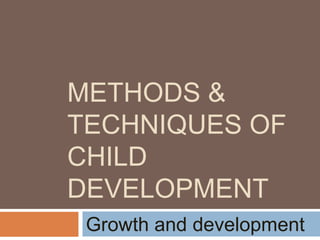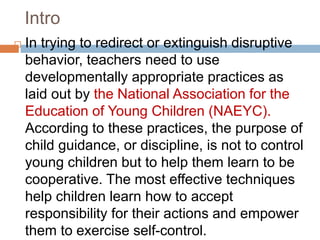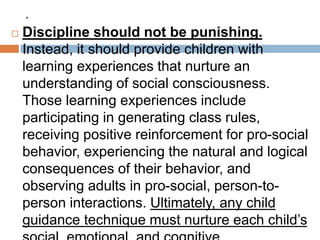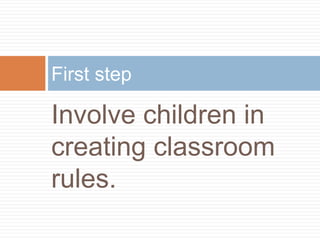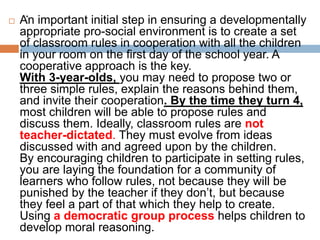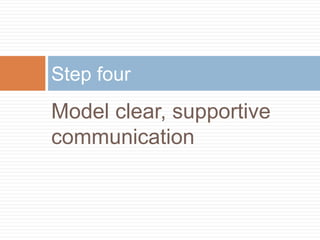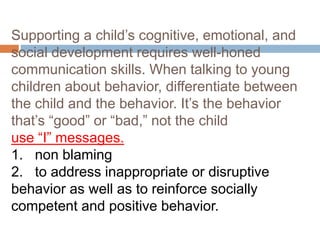The document outlines five steps for using developmentally appropriate techniques to redirect disruptive child behavior:
1. Involve children in creating classroom rules to encourage pro-social behavior and a sense of community.
2. Use positive reinforcement like praise and encouragement to reinforce good behavior rather than focusing on disruptive behavior.
3. Employ natural and logical consequences of actions rather than punishment to help children learn self-control and responsibility.
4. Model clear communication using non-blaming "I messages" to address both good and bad behaviors.
5. Be consistent in enforcing rules and addressing behaviors to effectively help children adjust their conduct over time.
